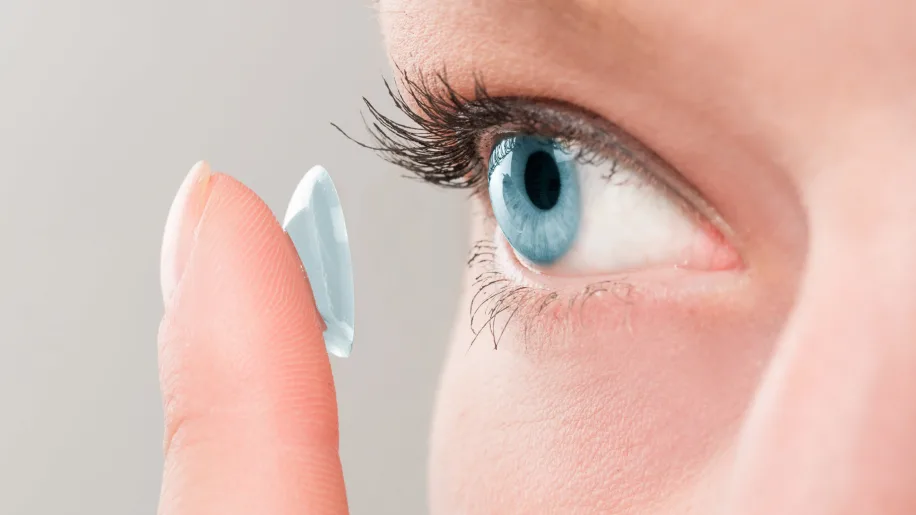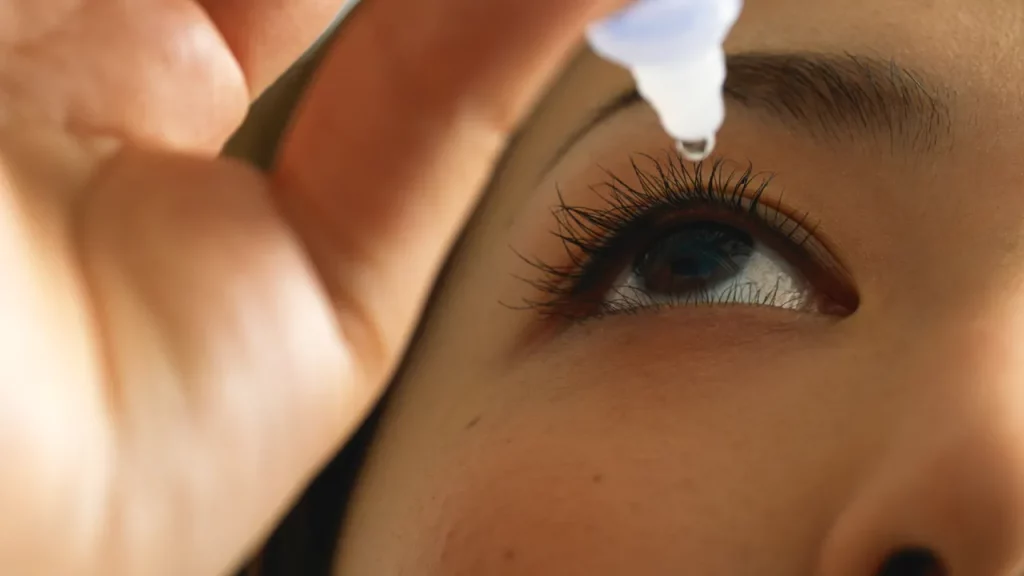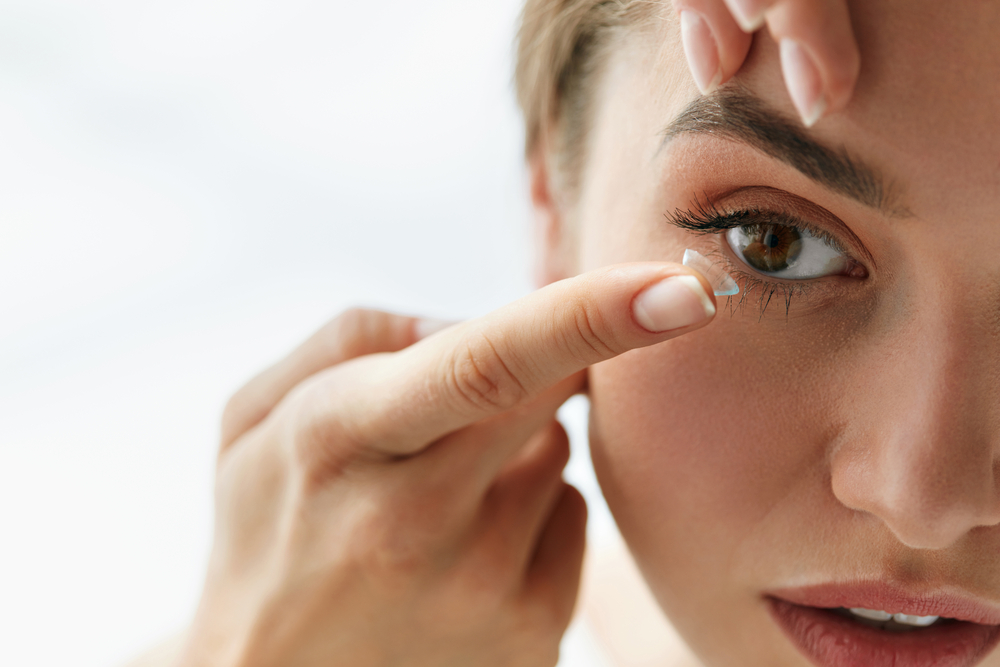What To Avoid When Using Contact Lenses

Contact lenses are a popular alternative to traditional eyeglasses for vision correction. They are thin, clear disks made of a special type of plastic that sit directly on the surface of the eye. Contact lenses are designed to correct common vision problems such as nearsightedness, farsightedness, astigmatism, and presbyopia. They provide a more natural look and a wider field of vision compared to glasses. Contact lenses are available in various types, including soft lenses, rigid gas permeable lenses, and specialty lenses for specific eye conditions. They offer convenience and flexibility, allowing wearers to participate in various activities without the hindrance of glasses. However, it is crucial to follow proper care and hygiene practices to avoid potential risks and maintain good eye health.
Advantages of Using Contact Lenses
Contact lenses offer a convenient alternative to eyeglasses, providing several advantages for those who choose to wear them. One of the key benefits is improved vision, especially for individuals with certain eye conditions. Contact lenses sit directly on the eye, allowing for a more precise and focused correction of refractive errors such as nearsightedness or astigmatism.
Moreover, wearing contact lenses provides a wider field of view compared to glasses. The lenses move with your eyes, eliminating peripheral distortions that can occur with frames. As a result, wearers can enjoy a more natural and unrestricted view of their surroundings.
Contact lenses are also well-suited for sports and vigorous activities. Unlike glasses, there is no risk of the lenses falling off, breaking, or causing discomfort during intense physical movement. They provide a secure and stable vision correction, allowing individuals to fully engage in activities like swimming, running, or playing contact sports without worry.
Tips for Avoiding Common Mistakes when Using Contact Lenses
While contact lenses offer convenience and freedom from glasses, wearers need to be aware of common mistakes that can affect their eye health and overall comfort. By avoiding these common pitfalls, contact lens users can ensure a safe and enjoyable experience while achieving optimal vision correction. In this article, we will discuss the common mistakes to avoid when using contact lenses and provide tips for proper care and maintenance. By following these guidelines, contact lens wearers can minimize the risk of eye infections, corneal ulcers, and other potential complications, allowing them to fully enjoy the benefits of wearing contact lenses.

Not Cleaning Hands Before Handling Lenses
When it comes to wearing contact lenses, proper hygiene is crucial to maintain healthy eyes. One of the most important steps in contact lens care is ensuring that your hands are clean before handling your lenses. Failing to clean your hands can introduce harmful bacteria and increase the risk of infection.
To prevent bacteria transfer and potential eye infections, it is important to wash your hands thoroughly with soap and water before handling contact lenses. This will remove any dirt, oils, or germs that may be present on your hands.
To properly wash your hands, wet them with clean, running water and apply soap. Rub your hands together vigorously for at least 20 seconds, making sure to clean all areas, including the backs of your hands, between your fingers, and under your nails. Rinse your hands well under running water and dry them using a clean towel.
It is important to note that sanitizing hand gels or wipes are not a substitute for proper hand washing. These products may not effectively remove all bacteria from your hands, putting your eye health at risk.
By taking the simple step of ensuring clean hands before handling your contact lenses, you can reduce the chances of infection and enjoy comfortable, clear vision. Remember, your eye health should always be a priority, so don’t neglect this important step in proper contact lens care.
Not Replacing Solutions Regularly and/or Using the Wrong Kind of Solution
Failing to regularly replace your contact lens solution or using the wrong kind can have serious consequences for your eye health.
One consequence is the risk of infection. Contact lens solution is designed to disinfect and clean your lenses, but over time it can lose its effectiveness. By not replacing your solution regularly, you may expose your eyes to bacteria and other contaminants, increasing the chances of developing painful eye infections.
Using the wrong type of contact lens solution can also lead to discomfort and blurred vision. Different contact lenses have specific requirements for cleaning and disinfecting, and using the wrong solution can cause damage to the lenses or irritate your eyes. It is crucial to follow the manufacturer’s instructions and consult with an eye care professional to determine the right type of solution for your specific lenses.
To maintain good eye health, it is essential to replace your contact lens solution as recommended by the manufacturer and follow the instructions provided. Regularly changing your solution and using the correct type will help minimize the risk of infection and ensure optimal comfort and vision when wearing your contact lenses. Don’t compromise your eye health – prioritize proper care and consultation with an eye care professional.
Wearing Contacts Too Long or Overnight
Wearing contact lenses for an extended period or overnight can have detrimental effects on your eye health. One of the primary risks is an increased chance of developing eye infections. When contacts are worn for longer than recommended, bacteria and other contaminants have more time to accumulate on the lenses, increasing the risk of infection.
Complications from wearing contacts too long can range from mild discomfort to severe problems. Blurred vision is a common symptom that arises when contacts are worn for extended periods. This occurs due to the build-up of debris and deposits on the lenses, hindering clear vision.
Corneal abrasions are another potential complication. When contacts are left in the eyes for an extended time, the surface of the cornea can become scratched or damaged. This can lead to pain, redness, and increased sensitivity to light.
Furthermore, the risk of eye infections, such as painful corneal ulcers, is significantly higher when contacts are worn overnight. These infections can cause severe discomfort, and potential vision loss, and may even require a corneal transplant in extreme cases.
To maintain optimal eye health, it is crucial to follow the recommended wear times for your specific contact lenses. Always remove and clean your contacts as per the instructions provided by your eye care professional.
Swimming With Contacts In
Swimming with contact lenses can pose several risks and dangers to your eye health. One of the primary concerns is the potential for eye infections. When you swim with contacts, the lenses can absorb water, which may be contaminated with harmful bacteria or other microorganisms. These can then become trapped against your eye, increasing the risk of infection.
In addition to infections, swimming with contact lenses can also lead to inflammation, corneal abrasions, and irritation. The chemicals and impurities present in pool water can cause irritation and redness in your eyes. Constant exposure to these irritants can also lead to inflammation and corneal abrasions, which can be painful and affect your vision.
If you choose to wear lenses while swimming, consider using daily disposables that can be discarded immediately after swimming to reduce the chances of water contamination and infections.
Always prioritize the health of your eyes by following proper contact lens care and hygiene practices. If you experience any discomfort, redness, or vision problems after swimming with contacts, remove them immediately and consult with your eye care professional.
Not Following Proper Disposal Instructions for Disposable Lenses
Not following proper disposal instructions for disposable lenses can pose a risk of infection. Disposable lenses are designed to be used for a specific period as recommended by the contact lens manufacturer. It is important to adhere to these recommended usage periods and dispose of the lenses accordingly.
Disposing of disposable lenses after the recommended usage period is crucial to maintain good eye health. Keeping these lenses for longer than recommended can increase the chances of bacterial contamination, leading to eye infections. The contact lens manufacturer provides specific instructions on the correct disposal method, which should be followed to ensure proper hygiene.
To safeguard against the risk of infection, always follow the disposal instructions provided by the contact lens manufacturer. This includes throwing away the disposable lenses after the recommended usage period and using a fresh pair. Adopting proper disposal practices for disposable lenses is an essential aspect of contact lens care and contributes to maintaining healthy eyes.
By following the recommended disposal instructions for disposable lenses, contact lens wearers can minimize the chances of infection and promote optimal eye health.
Rubbing or Touching Eyes With Contacts Still In Place
Rubbing or touching your eyes while wearing contact lenses can pose several risks and potential consequences. It is important to be aware of these dangers and to adopt proper practices to avoid them.
One of the main risks of rubbing or touching your eyes with contacts still in place is the potential for scratching or damaging the cornea. The cornea is the clear, protective outer layer of the eye, and any damage to it can lead to infections or corneal ulcers. These conditions can be painful and may require medical intervention to treat.
It is essential to recognize the symptoms that may indicate the need for immediate removal of contact lenses. Symptoms such as redness, pain, blurred vision, light sensitivity, or excessive tearing should not be ignored and should prompt the removal of the lenses. Continuing to wear the lenses in such situations can exacerbate the problem and increase the risk of further complications.
To prevent these issues, it is crucial to handle contact lenses properly. This includes avoiding rubbing or touching the eyes while the lenses are in place. Rubbing your eyes can introduce bacteria or irritants into the eye, increasing the likelihood of infections or corneal ulcers. Clean hands and a gentle touch are essential when handling contact lenses to minimize these risks.
The process of applying makeup while wearing contacts is discussed.
When it comes to applying makeup while wearing contact lenses, it’s important to prioritize safety and minimize the risk of eye irritation or infection. Here are some essential tips to keep in mind:
1. Insert your contact lenses before applying any makeup. This helps prevent makeup particles from getting trapped between your eye and the lens.
2. Wash your hands thoroughly before handling your lenses or applying makeup. This reduces the risk of transferring dirt, bacteria, or irritants to your eyes.
3. Opt for hypo-allergenic and water-based makeup products. These are less likely to cause any allergic reactions or eye irritation compared to oil-based or heavy formulas.
4. Avoid applying eyeliner on your waterline. The waterline is the inner rim of your eyelids, and applying makeup there increases the chances of it coming into direct contact with your lenses.
5. Replace your eye makeup regularly. Mascara, eyeliner, and eyeshadow can harbor bacteria over time, so it’s important to replace them every three months to prevent any potential infections.
By following these guidelines, you can safely enhance your beauty while wearing contact lenses, minimizing the risk of eye irritation or discomfort. Remember to consult with your eye care professional for any specific recommendations or concerns.
Reusing Old, Outdated, or Damaged Contact Lens Solutions
Reusing old, outdated, or damaged contact lens solutions can pose serious risks to your eye health. It is crucial to always use fresh contact lens solution that is within its expiration date to prevent potential eye infections and corneal ulcers.
Expired solutions lose their effectiveness and may not properly clean and disinfect your lenses. This can lead to a buildup of bacteria, dirt, and other contaminants on your lenses, increasing the risk of eye infections. Moreover, expired solutions may not properly lubricate your lenses, causing discomfort, dryness, and blurry vision.
Using damaged contact lens solutions, such as those with broken seals or leaks, can introduce harmful bacteria and microorganisms to your lenses. This significantly increases the chances of developing painful infections and corneal ulcers.
To ensure the safety and effectiveness of your contact lens solutions, it is important to follow the instructions provided by the manufacturer. Store solutions in a clean, dry place away from direct sunlight, and properly dispose of any unused solution according to the guidelines.
Your eye health is too precious to risk with expired or damaged solutions. Always use fresh contact lens solutions and prioritize proper care to minimize the chances of eye infections and corneal ulcers.
Sleeping With Makeup On After Wearing Contacts
Sleeping with makeup on after wearing contact lenses poses several risks and potential consequences. Makeup can easily contaminate contact lenses, leading to increased chances of eye infections.
Makeup products, such as mascara, eyeliner, and eyeshadow, can contain bacteria and other harmful microorganisms. When left on overnight, these contaminants can transfer onto the contact lenses. The warm and moist environment created by the lenses provides an ideal breeding ground for bacteria, increasing the risk of eye infections, such as conjunctivitis or corneal ulcers.
To avoid these complications, it is crucial to remove makeup before taking out contact lenses. Start by washing your hands thoroughly with soap and water to minimize the risk of introducing any additional bacteria or dirt to the eyes. Then, use oil-free makeup removers or cleansing wipes specifically designed for use around the eyes to gently remove all traces of makeup. Make sure to avoid any products that contain oils, as they can leave residues on the lenses.
Proper makeup removal and contact lens hygiene are essential for maintaining good eye health. By following these steps, contact lens wearers can minimize the risk of contamination and protect their eyes from potential infections.
Risks Associated with Poor Care of Contact Lenses
Proper care and hygiene are essential when it comes to using contact lenses. Failing to follow the necessary precautions can lead to a range of potential risks and complications. From eye infections to corneal ulcers and blurry vision, neglecting the care of your contact lenses can have serious consequences on your eye health. In this article, we will explore the various risks associated with poor contact lens care and provide tips on how to avoid them. By following these guidelines, you can ensure a safe and comfortable wearing experience while maintaining optimal eye health.

Eye Infections and Corneal Ulcers
Contact lens wearers are particularly susceptible to certain types of eye infections, including bacterial, viral, and fungal infections. Micro-abrasions on the cornea caused by improper lens care can make it easier for these infections to take hold.
To minimize the risk of developing eye infections and corneal ulcers, it is crucial to clean and disinfect contact lenses properly. Avoid using tap water or soapy water to clean lenses, as they may contain bacteria that can cause infections. Use fresh contact lens solution every time and never reuse old solution. Always wash hands thoroughly before handling lenses, and never wear lenses while swimming in pools or hot tubs.
Contact lens wearers should also follow their eye care provider’s recommendations for lens wear and care. Regular check-ups and following proper cleaning and disposal procedures can significantly reduce the chances of developing dangerous eye infections and painful corneal ulcers. Remember, taking care of your contact lenses means taking care of your eye health.
Blurred Vision and Corneal Abrasions
Blurred vision and corneal abrasions are common risks associated with poor care of contact lenses. Neglecting proper cleaning, solution replacement, and disposal of lenses can lead to these uncomfortable and potentially serious eye conditions.
When contact lenses are not cleaned regularly or if dirty hands are used to handle them, debris and bacteria can accumulate on the lens surface. This can result in blurred vision as the debris interferes with proper vision correction. Additionally, when lenses are not disinfected with fresh contact lens solution, bacteria can thrive and cause infections in the eyes, leading to corneal abrasions.
Corneal abrasions occur when the surface of the eye is scratched or damaged. This can happen when lenses are inserted without proper cleaning, as debris trapped between the lens and the eye can cause friction and abrasions. These abrasions can be painful and may further contribute to blurred vision.
To avoid these risks, it is essential to practice proper lens care. Clean hands thoroughly before handling lenses, and never reuse old or damaged contact lens solutions. Replace the solution in the lens case with a fresh solution every time. It is also important to follow the recommended disposal schedule for your specific type of contact lenses, whether they are daily disposables or meant for extended wear.
By prioritizing proper cleaning, solution replacement, and disposal of lenses, contact lens wearers can minimize the chances of developing blurred vision and corneal abrasions. Regular eye check-ups and following the advice of an eye care professional are also crucial for maintaining good eye health.
Conclusion
In conclusion, certain mistakes contact lens wearers should avoid. Swimming or entering hot tubs while wearing contact lenses is a risk as water sources like tap water, swimming pools, or even soapy water can contain harmful microorganisms. It’s also crucial not to reuse or top off old contact lens solutions, as this can introduce bacteria and increase the chances of eye infections. Lastly, avoid rubbing or touching your eyes with contacts in place to prevent corneal abrasions.





